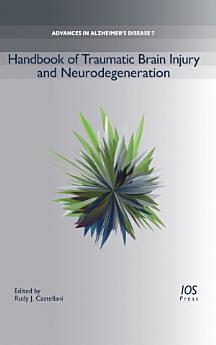Handbook of Traumatic Brain Injury and Neurodegeneration
Rudy J. Castellani
Apr 2020 · Advances in Alzheimer's Disease Book 7 · SAGE Publications Limited
Ebook
504
Pages
family_home
Eligible
info
reportRatings and reviews aren’t verified Learn More
About this ebook
Holbourne’s theory that rotational head movement and shear strains were limiting factors in producing acute parenchymal brain damage was a watershed moment in understanding traumatic brain injury (TBI). Long term effects, and in particular neurodegenerative proteinopathy subsequent to TBI, remain theoretical, notwithstanding the poorly understood ‘punch drunk’ syndrome of the early and mid-20th century, and the 21st century concept of chronic traumatic encephalopathy. This book, the Handbook of Traumatic Brain Injury and Neurodegeneration, has as its theme the marriage between neurodegenerative disease and neurotrauma through TBI surrogates such as sport, military service, and experimental models, and the legitimacy of that marriage. In the 32 contributions included here, this handbook not only explores the deleterious effects of genuine TBI, but also, and more importantly, the relationship between TBI and neurodegeneration. Controversy notwithstanding, there is much to be learned about the biological effects of TBI, substrates for long-term sequelae, the relationship between TBI and diverse neuropsychiatric disorders, and targets for therapy. The overall message to the neuroscience community from these papers may be a cautionary tale. The null hypothesis, that there is no causal relationship between TBI and progressive neurodegenerative disease, appears to be very much in play, and the book will be of interest to all those working in the field.
Rate this ebook
Tell us what you think.
Reading information
Smartphones and tablets
Install the Google Play Books app for Android and iPad/iPhone. It syncs automatically with your account and allows you to read online or offline wherever you are.
Laptops and computers
You can listen to audiobooks purchased on Google Play using your computer's web browser.
eReaders and other devices
To read on e-ink devices like Kobo eReaders, you'll need to download a file and transfer it to your device. Follow the detailed Help Center instructions to transfer the files to supported eReaders.








